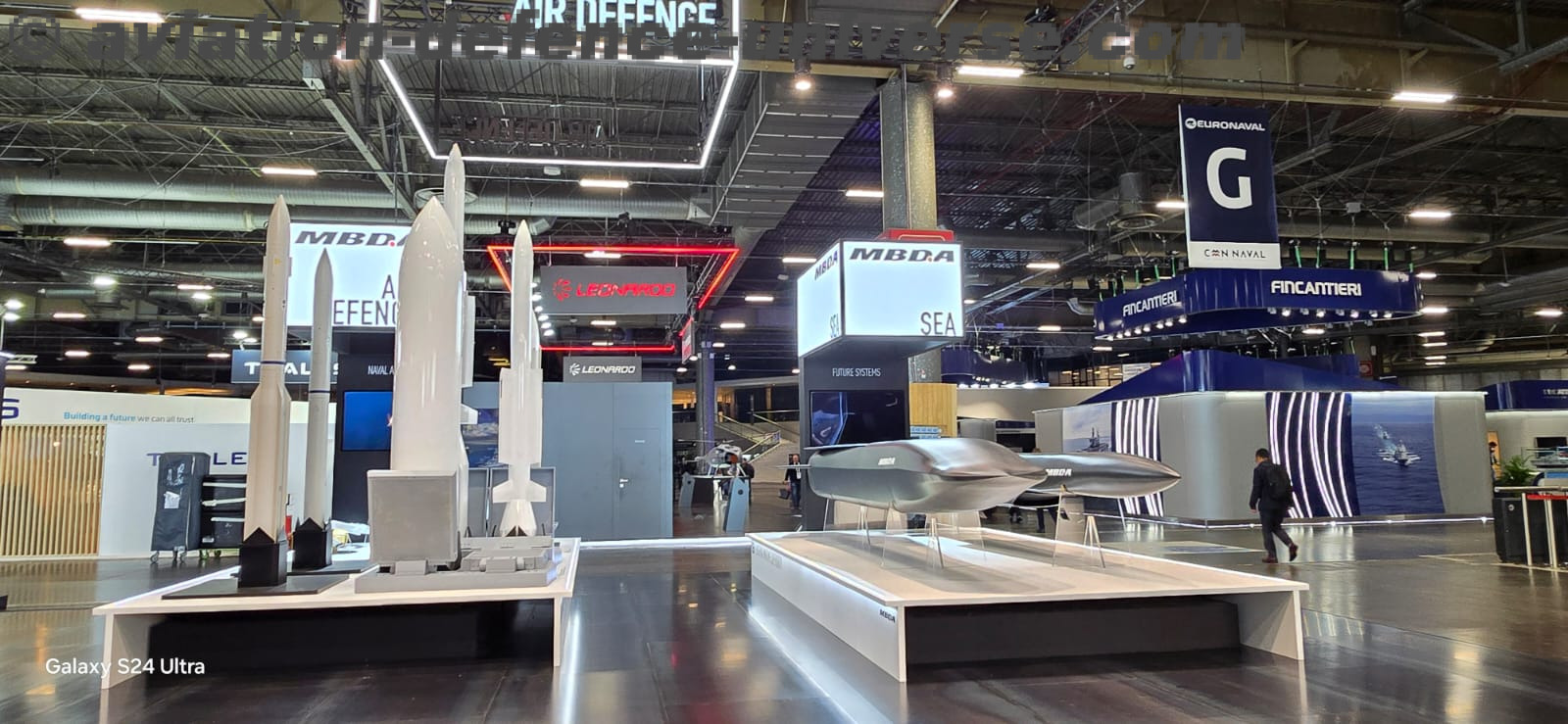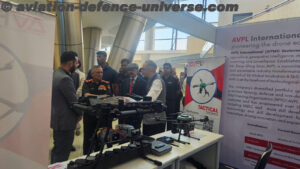By Sangeeta Saxena
Paris/New Delhi. 20 November 2024. It was a discussion with team MBDA at the recently concluded Euronaval 2024 which really stirred the mind to think. Is the world at the cusp of a major advancement in the already state-of-the-art missile technology? The defence industry is undergoing a transformative phase, marked by innovations that blend artificial intelligence, collaboration, and advanced weaponry. At the forefront of this evolution are deep-strike missile systems capable of precision targeting and overcoming sophisticated air defence mechanisms. A recent live demonstration showcased the potential of collaborative swarm technology, signaling a new era in military capabilities.
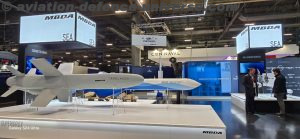 During a live demonstration at Le Bourget last year, a swarm of nine to ten missiles showcased the principle of collaborative operations. The missiles, interconnected through advanced data links and AI, dynamically reconfigured their approach in flight to counter pop-up air defence systems and ensure mission success. This exercise highlighted the ability of such systems to adapt to evolving battlefield scenarios, a crucial aspect of modern warfare.
During a live demonstration at Le Bourget last year, a swarm of nine to ten missiles showcased the principle of collaborative operations. The missiles, interconnected through advanced data links and AI, dynamically reconfigured their approach in flight to counter pop-up air defence systems and ensure mission success. This exercise highlighted the ability of such systems to adapt to evolving battlefield scenarios, a crucial aspect of modern warfare.
Collaborative Swarm Technology is where missiles communicate in real-time, allowing the group to compensate for losses and achieve saturation against enemy defences. Artificial Intelligence plays a pivotal role in real-time reconfiguration and target prioritization. Next-Generation Seekers Enhanced capabilities using ESA (Electronically Scanned Array) technology, which provides broader operational functionality. Infrared Imaging shows advances in imaging technology are refining targeting precision, especially for challenging targets like naval assets.
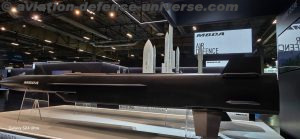 The next generation of missiles like TP-15 and LG-10 are designed for both land and naval engagements.TP-15 specializes in striking fortified ground targets, including military depots and reinforced shelters. LG-10 excels in anti-ship operations and disrupting air defence systems by targeting radar installations. It is also equipped for destroying high-value air assets such as AWACS and tankers over long distances.
The next generation of missiles like TP-15 and LG-10 are designed for both land and naval engagements.TP-15 specializes in striking fortified ground targets, including military depots and reinforced shelters. LG-10 excels in anti-ship operations and disrupting air defence systems by targeting radar installations. It is also equipped for destroying high-value air assets such as AWACS and tankers over long distances.
The development of these systems reflects a joint effort between nations, combining diverse expertise to foster innovation. Collaboration among countries and defence firms is paving the way for breakthroughs that were previously unattainable. This cooperative spirit is essential in addressing evolving military doctrines and threats. The transition from legacy systems like SCALP to next-gen deep-strike missiles such as FCASW underscores the need for continuous innovation. As adversaries enhance their air defence capabilities, the emphasis on technological superiority and adaptability grows. The European defence community remains committed to meeting these demands, with ongoing negotiations and development efforts ensuring readiness for the next decade and beyond.
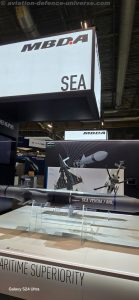 The future of warfare is rooted in precision, collaboration, and technological agility. The advancements demonstrated in swarm missile systems and deep-strike capabilities are not just innovations; they are strategic imperatives. As nations invest in these technologies, the objective remains clear: to deliver unparalleled military effectiveness while adapting to the dynamic landscape of modern conflicts.
The future of warfare is rooted in precision, collaboration, and technological agility. The advancements demonstrated in swarm missile systems and deep-strike capabilities are not just innovations; they are strategic imperatives. As nations invest in these technologies, the objective remains clear: to deliver unparalleled military effectiveness while adapting to the dynamic landscape of modern conflicts.
As modern warfare grows more complex, the demand for cutting-edge missile technology becomes increasingly critical. MBDA, a leader in missile systems of Europe and across the globe, showcased its advancements in long-range and precision-strike capabilities. The company, known for its iconic systems such as Exocet, Storm Shadow, and Automat, is now focused on developing next-generation missiles to meet the challenges of high-intensity conflict and advanced air defence systems.
MBDA is doubling down on its deep-strike capabilities, a cornerstone of modern military strategy. With a legacy of innovation spanning decades, the company is unveiling products designed to address the demands of contemporary and future conflicts. One key focus is on long-range strike capabilities, critical for deterring aggression and delivering decisive blows to high-value targets in enemy territory. These missiles, such as the Exocet MM40 Block 3C and the NCM (Naval Cruise Missile), boast extended ranges and the ability to operate in challenging environments, including adverse weather and intense electronic warfare conditions.
MBDA emphasizes the importance of producing “sovereign solutions” entirely designed and manufactured in Europe. This approach ensures freedom of use for operators, security of supply, and strategic independence. The company’s products, including its next-generation anti-ship missile, T-Zero, and its submarine-launched variant, SM40, reflect this philosophy. These innovations demonstrate MBDA’s commitment to enhancing maritime and ground-based defence systems. The versatility of products like the Exocet family, adaptable for launch from ships, submarines, trucks, and aircraft, underscores their relevance in multi-domain operations.
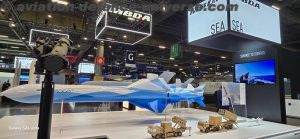 Looking ahead, MBDA is developing two groundbreaking missile systems. The TP-15, a super-stealth cruise missile, is engineered to evade advanced air defence systems, ensuring precise target strikes. Complementing this is the RG-10, a high-speed supersonic missile with unmatched maneuverability, designed to overwhelm even the most robust defences. These projects, spearheaded by France, the UK, and now Italy, signify a unified European effort to bolster defence capabilities against evolving threats. “The rules of engagement are changing,” an MBDA representative stated. “One missile does not suffice in high-intensity scenarios. We need multi-faceted solutions to penetrate the densest air defences.”
Looking ahead, MBDA is developing two groundbreaking missile systems. The TP-15, a super-stealth cruise missile, is engineered to evade advanced air defence systems, ensuring precise target strikes. Complementing this is the RG-10, a high-speed supersonic missile with unmatched maneuverability, designed to overwhelm even the most robust defences. These projects, spearheaded by France, the UK, and now Italy, signify a unified European effort to bolster defence capabilities against evolving threats. “The rules of engagement are changing,” an MBDA representative stated. “One missile does not suffice in high-intensity scenarios. We need multi-faceted solutions to penetrate the densest air defences.”
MBDA’s commitment to innovation extends beyond product development. Collaborative programs across Europe, such as the FRAME EVO frigates and new feasibility studies for ground-based missile systems, signal the company’s intent to integrate cutting-edge technology seamlessly into military frameworks.
MBDA continues to shape the future of missile systems with its focus on deep strike, stealth, and supersonic technologies. As geopolitical tensions escalate and high-intensity warfare becomes a reality, the company’s advancements are set to redefine defence strategies for European and allied forces, ensuring readiness for the battles of tomorrow. These components create a comprehensive and compelling piece that highlights MBDA’s innovations and their implications for modern defence.
The story of MBDA does not end here and shall continue when I tell you more about the interesting and exciting technologies which shall create a narrative which should be oriented to become assets to the nations of the world to help secure themselves with confidence.






































